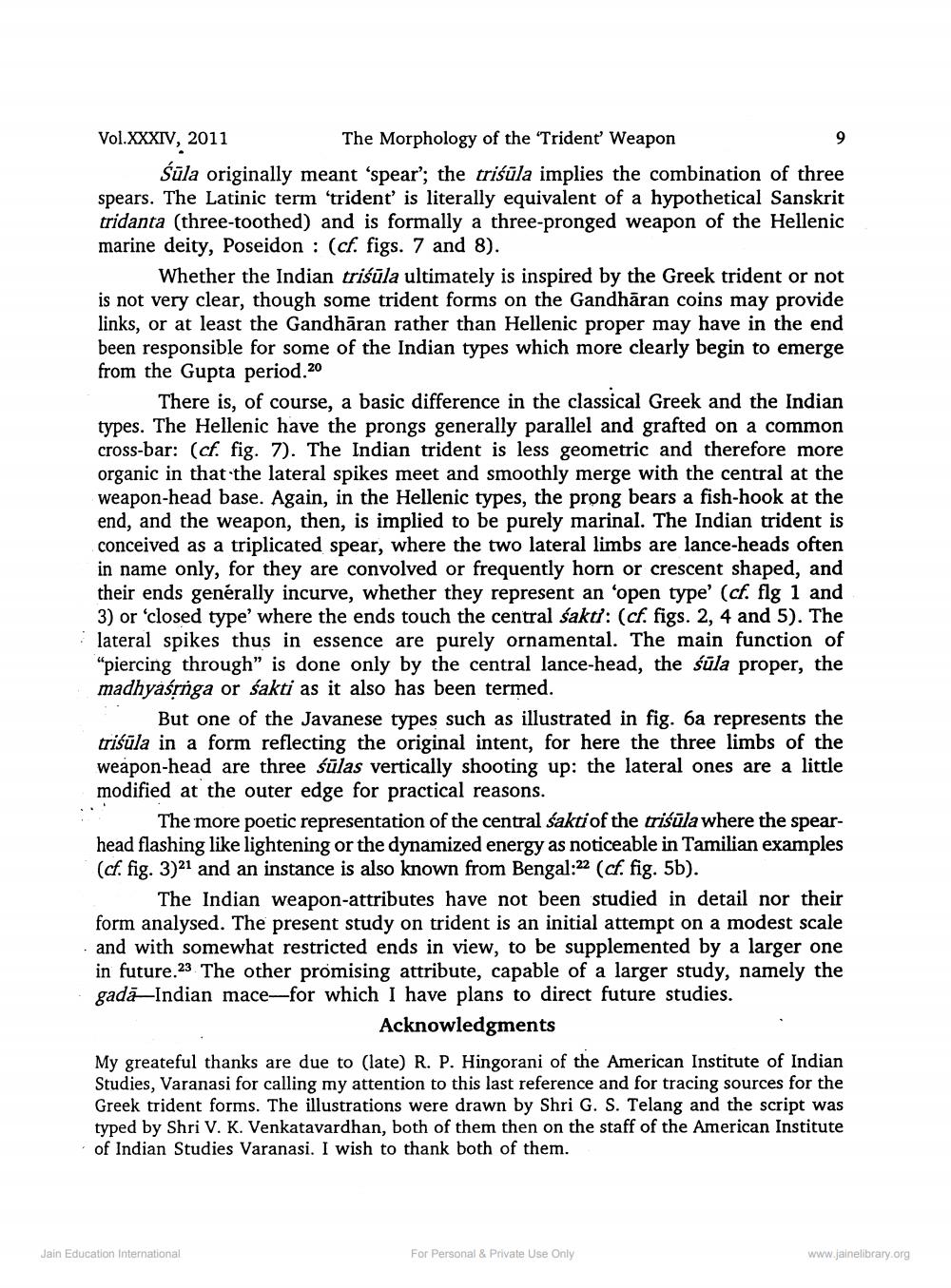________________
Vol.XXXIV, 2011
The Morphology of the 'Trident Weapon Sūla originally meant 'spear'; the triśūla implies the combination of three spears. The Latinic term 'trident' is literally equivalent of a hypothetical Sanskrit tridanta (three-toothed) and is formally a three-pronged weapon of the Hellenic marine deity, Poseidon : (cf. figs. 7 and 8).
Whether the Indian triśūla ultimately is inspired by the Greek trident or not is not very clear, though some trident forms on the Gandhāran coins may provide links, or at least the Gandhāran rather than Hellenic proper may have in the end been responsible for some of the Indian types which more clearly begin to emerge from the Gupta period.20
There is, of course, a basic difference in the classical Greek and the Indian types. The Hellenic have the prongs generally parallel and grafted on a common cross-bar: (cf. fig. 7). The Indian trident is less geometric and therefore more organic in that the lateral spikes meet and smoothly merge with the central at the weapon-head base. Again, in the Hellenic types, the prong bears a fish-hook at the end, and the weapon, then, is implied to be purely marinal. The Indian trident is conceived as a triplicated spear, where the two lateral limbs are lance-heads often in name only, for they are convolved or frequently horn or crescent shaped, and their ends generally incurve, whether they represent an 'open type' (cf. flg 1 and 3) or closed type' where the ends touch the central sakti: (cf. figs. 2, 4 and 5). The lateral spikes thus in essence are purely ornamental. The main function of "piercing through" is done only by the central lance-head, the süla proper, the madhyasrnga or śakti as it also has been termed.
But one of the Javanese types such as illustrated in fig. 6a represents the trisüla in a form reflecting the original intent, for here the three limbs of the weapon-head are three sülas vertically shooting up: the lateral ones are a little modified at the outer edge for practical reasons.
The more poetic representation of the central sakti of the trisüla where the spearhead flashing like lightening or the dynamized energy as noticeable in Tamilian examples (cf. fig. 3)21 and an instance is also known from Bengal:22 (cf. fig. 5b).
The Indian weapon-attributes have not been studied in detail nor their form analysed. The present study on trident is an initial attempt on a modest scale and with somewhat restricted ends in view, to be supplemented by a larger one in future.23. The other promising attribute, capable of a larger study, namely the gadā - Indian mace—for which I have plans to direct future studies.
Acknowledgments My greateful thanks are due to (late) R. P. Hingorani of the American Institute of Indian Studies, Varanasi for calling my attention to this last reference and for tracing sources for the Greek trident forms. The illustrations were drawn by Shri G. S. Telang and the script was typed by Shri V. K. Venkatavardhan, both of them then on the staff of the American Institute of Indian Studies Varanasi. I wish to thank both of them.
Jain Education International
For Personal & Private Use Only
www.jainelibrary.org




